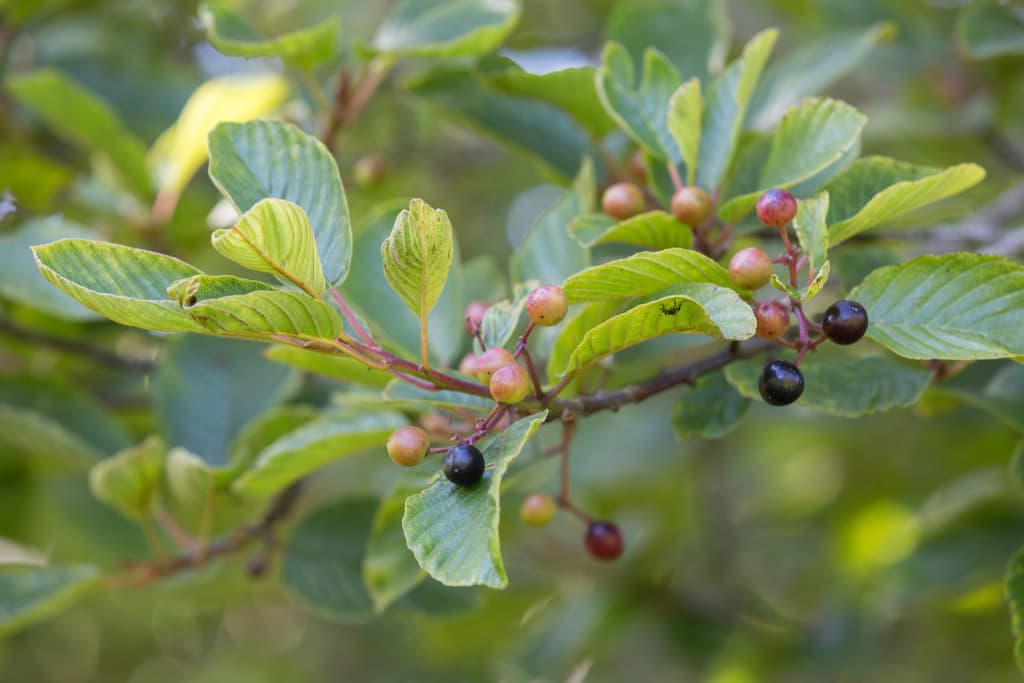
Scientific Name
Rhamnus purshiana
Common Names
Cascara Sagrada, Sacred Bark
Plant Family
Rhamnaceae
Location
Native to the Pacific Northwest of North America. Found in moist, shady forest areas along coastal mountain ranges, especially in Oregon, Washington, and Northern California. Grows as a small tree or shrub in rich woodland soils.
Description
Deciduous tree or shrub with dark green, glossy leaves and small greenish flowers. The bark is purplish-brown, thin, and strips easily from mature stems. Has a bitter, astringent taste and must be aged at least a year before use to reduce harshness.
Uses
Primarily used as a laxative, especially to relieve chronic or occasional constipation; when aged or properly prepared, its bark gently stimulates the large intestine to promote peristalsis without harsh irritation. Its action is also somewhat tonifying to the bowel, helping restore regularity in sensitive or older individuals. While some sources attribute anti-inflammatory effects to its compounds (notably emodin derivatives), much of its traditional use is more focused on digestive support rather than inflammation control. There is also mention in folk use of R. purshiana as a bitter tonic to stimulate appetite, and perhaps mild carminative effects (relieving gas) though that is less well documented. Its use has also included treatment of digestive disorders like colitis and liver complaints in traditional systems, though clinical evidence is thin.
Energetics
Bitter, cooling, stimulating. Moves stuck bowels and stagnant liver energy. Strongly cleansing.
Parts Used
Aged bark (at least 1 year)
Constituents
Anthraquinone glycosides (cascarosides), emodin, resins, tannins
Dosage
- Tincture (1:5): 10–30 drops at night
- Decoction: ½–1 tsp per cup, simmer 20 min (strong — not usually recommended unless expertly blended)
Notes on Use
Use Cascara sparingly — it’s effective but needs respect. Best for short-term use while diet and underlying patterns are being addressed. Often helpful for people with chronic constipation due to tension or sluggish peristalsis.
Harvesting
• Bark harvested in spring or early summer. Must be dried and aged for a year to reduce harsh anthraquinone reaction.
Contraindications
Not for long-term use. Avoid in pregnancy, lactation, intestinal obstruction, or inflammatory bowel conditions.
Recipes
- Gentle Laxative Blend: Cascara, licorice, fennel, marshmallow root
- Liver Detox Tonic: Cascara, dandelion root, yellow dock, burdock